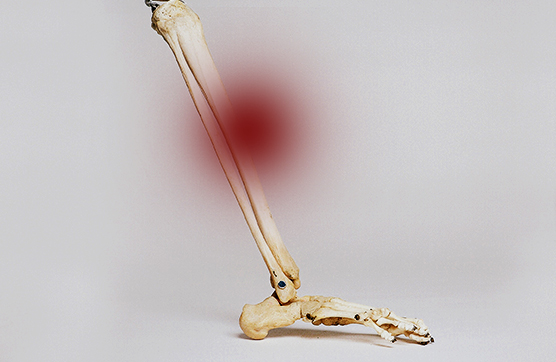Shin splints are a real pain

‘Pain equals gain’ is not always true. Lower-leg pain induced by running or walking could be shin splints, and your body’s way of telling you to take a break, temporarily.
Typically, a patient’s rehabilitation after hospitalisation requires exercise therapy. Walking and running at home or in the community are popular options. These exercises are easy to fit into your day, and are cost-effective – all you need is a good pair of shoes. You can also adapt them to your fitness level and abilities. However, it’s important to exercise responsibly and pay attention to any sign of injury – such as shin splints.
Inflammation is your worst enemy
Dr Riyas Fadal has a master’s degree in sports medicine and is the national manager of Life Rehabilitation. He explains: ‘Shin splints result from inflammation of the lining of the leg bone due to an unaccustomed strain.’
This results in lower-leg pain, typically below the knee and on the outside of the limb, which worsens with exertion and improves with rest.
Because it is caused by overexertion, the best treatment for shin splints is rest and addressing the causative factors. ‘Usually patients recover within three to five days, with the inflammation subsiding and the stressor reduced,’ adds Dr Fadal.
What causes shin splints?
Flora Mathebula, a rehabilitation clinical specialist based at the Life Rehabilitation Unit at Life Riverfield Lodge, cautions against self-diagnosis. Rather consult your primary care team (such as a general practitioner, podiatrist, physiotherapist or biokineticist) to confirm shin splints and identify and treat the aggravating factors, she advises.
Untreated shin splints can lead to more serious injuries, such as tibial stress fractures. ‘These are small fractures in the shin bones, which require a minimum of six weeks’ rest from walking and running. Compartment syndromes can also develop, often resulting in required surgery or causing other complications, all of which can prolong the rehabilitation process unnecessarily,’ Flora explains.
‘There are no simple solutions to shin splints, but one thing’s for sure: prevention or early treatment is much easier than dealing with a nagging, chronic case.’
Shin splints at a glance
Cause
Repetitive stress to the shin bones, such as when you:
- Start a new exercise programme too quickly
- Increase the intensity, frequency or duration of workouts
- Wear incorrectly fitting or worn-out shoes
- Have a poor running technique, possibly due to a muscle imbalance
- Have one leg that is slightly shorter than the other
- Have flat feet or high arches
- Exercise on hard surfaces
Symptoms
- Dull ache along the shin bone
- Area is tender and painful to the touch
- Mild swelling that can lead to numbness and weakness in the affected foot
What helps shin splints?
- Stop the aggravating exercise until you have recovered. Use this time to work on other areas of your body, such as core strength and general flexibility
- Reduce the inflammation with: ice packs, compression bandages, limb elevation, anti-inflammatory medication prescribed by your treating doctor
- When you are ready to resume exercise, buy correctly fitted shoes. Start slowly and stop immediately if the pain returns
Shin splint support
Correctly fitted exercise shoes are critical to preventing injuries. Podiatrist Gugu Njoko shares these guidelines for finding the perfect sport shoe:
- Shape should complement the natural form of your feet
- Front – round with deep toe boxes
- Soles should be flexible; if they can’t flex at the correct position, arch fatigue or a foot strain may result
- Lining must be smooth so there are no pressure points, which may result in blisters, corns and calluses
- New footwear should be gradually worn in before any strenuous activities or long distances are undertaken
- Replacement – you should buy a new pair after roughly every 500km, or when they are damaged
The information is shared on condition that readers will make their own determination, including seeking advice from a healthcare professional. E&OE. Life Healthcare Group Ltd does not accept any responsibility for any loss or damage suffered by the reader as a result of the information provided.

